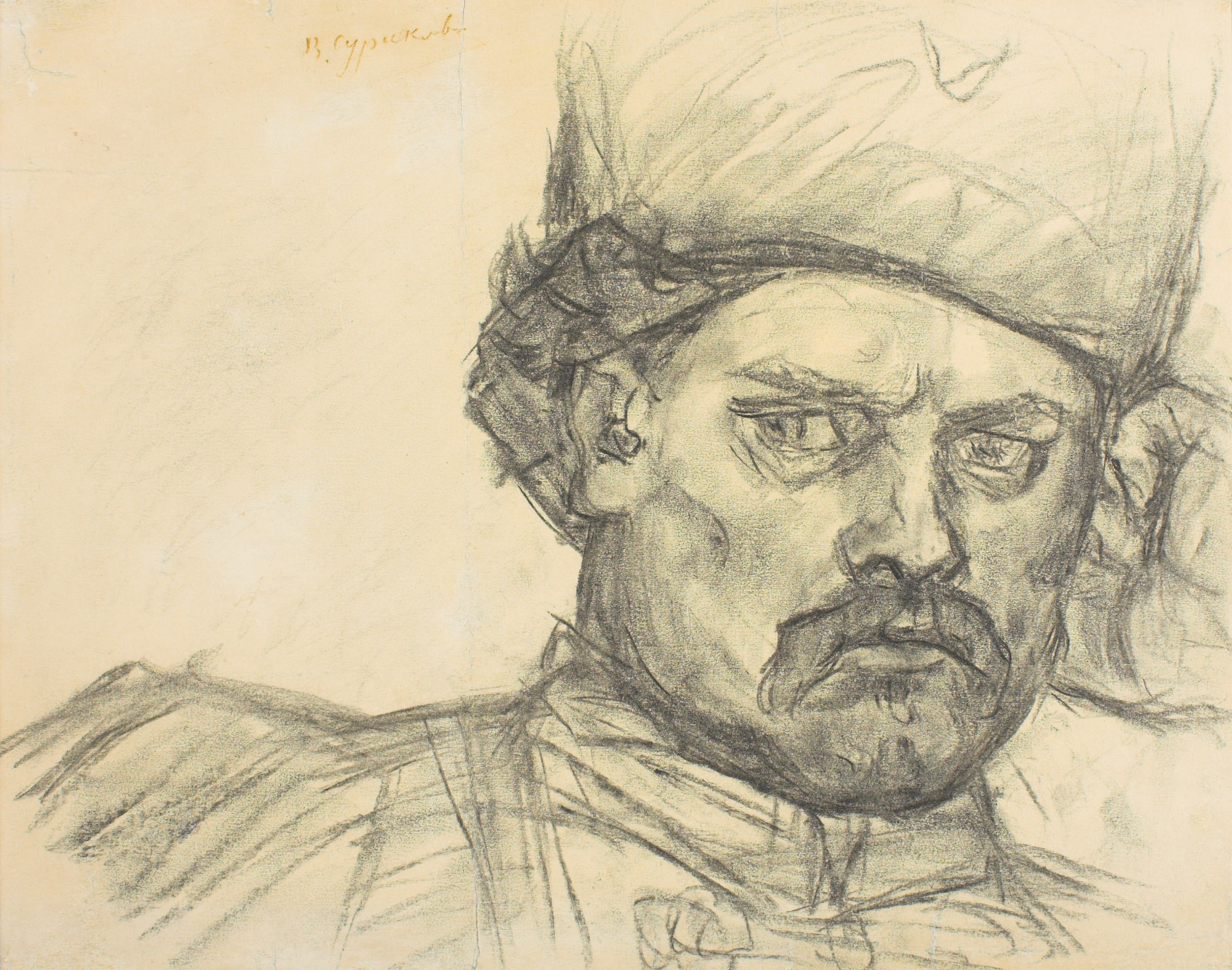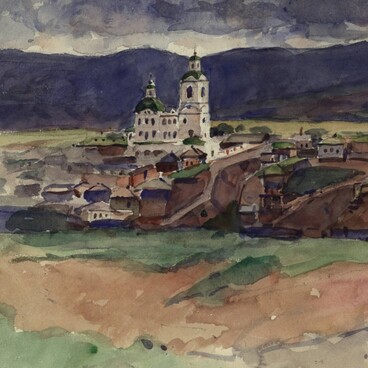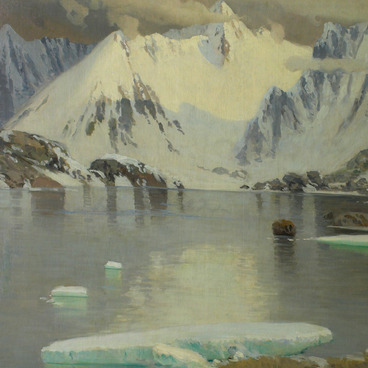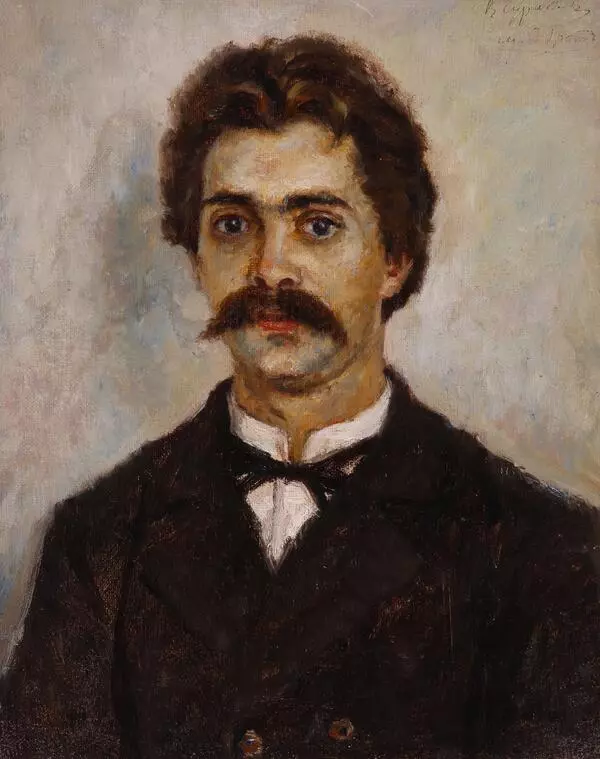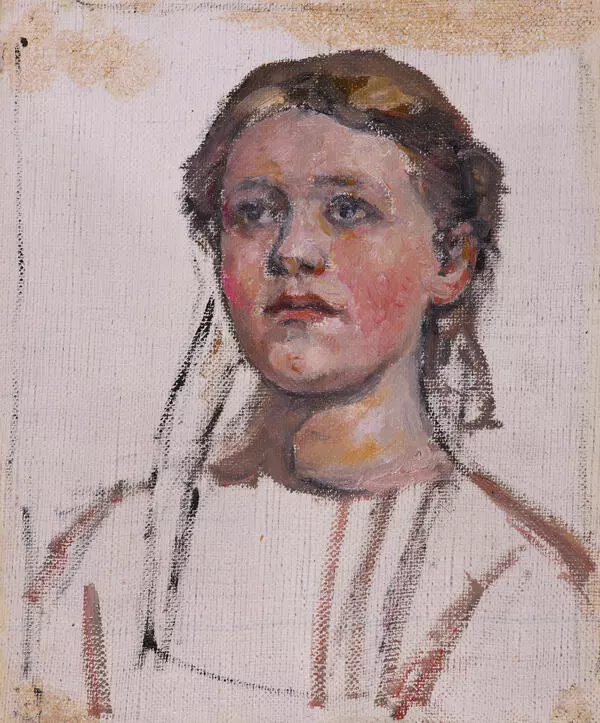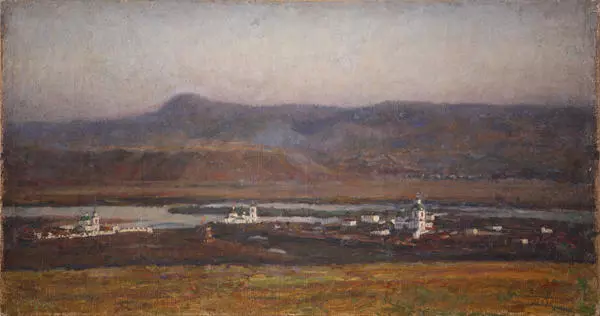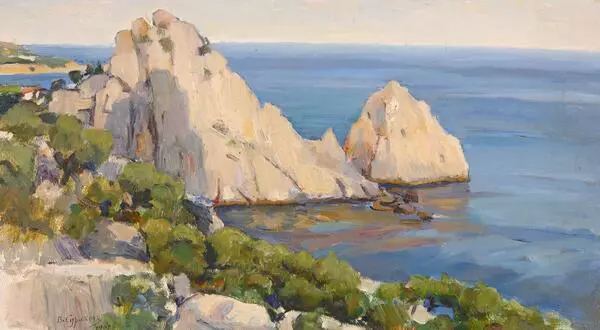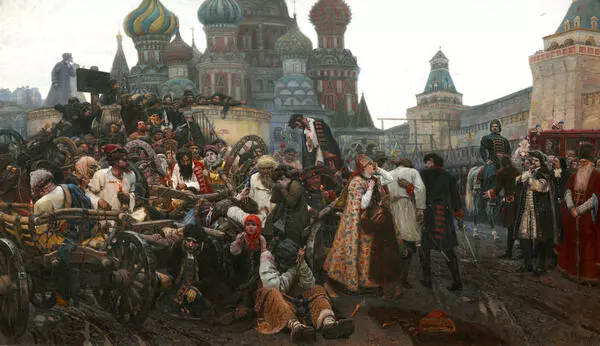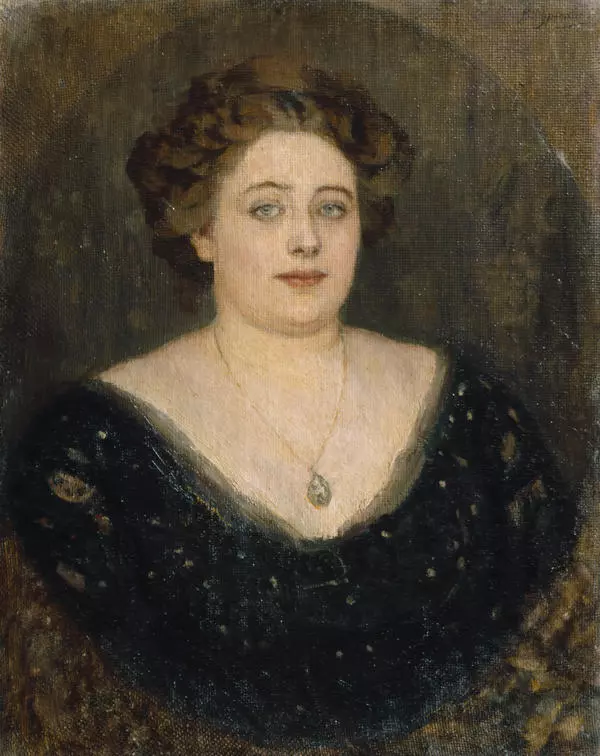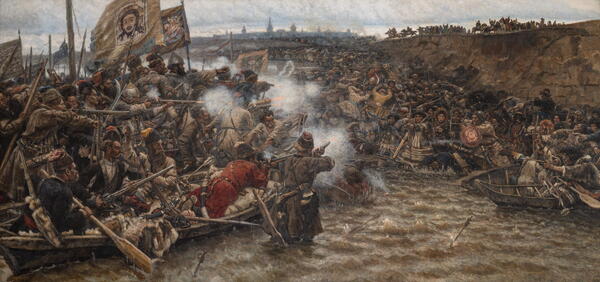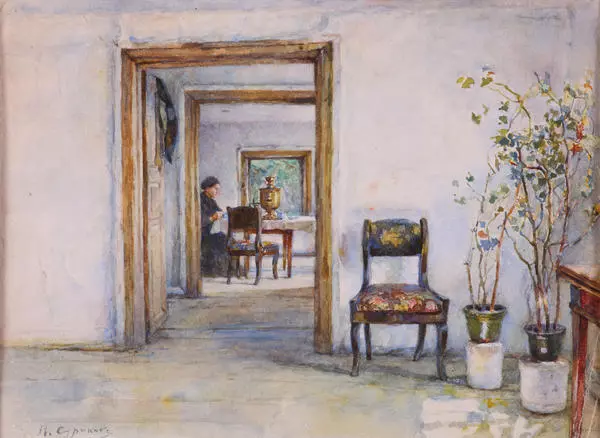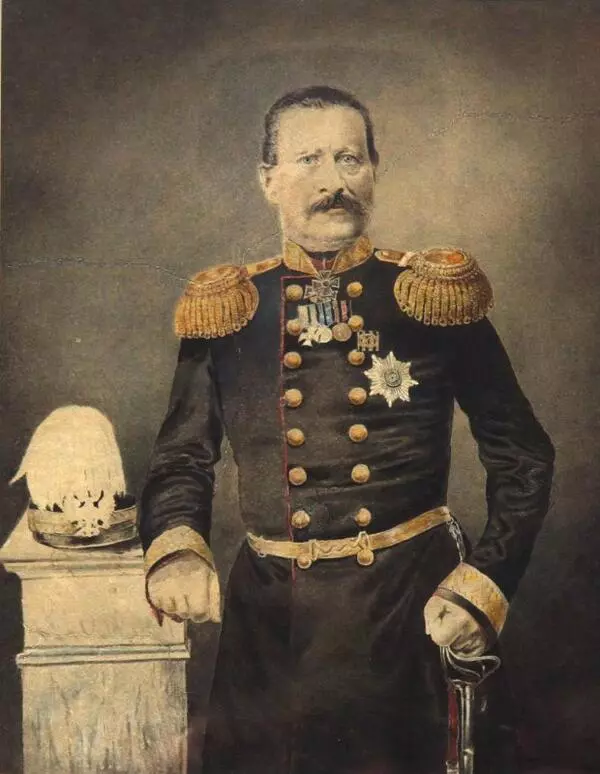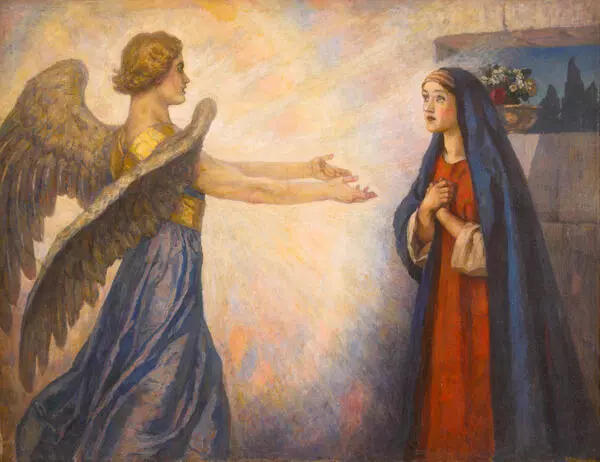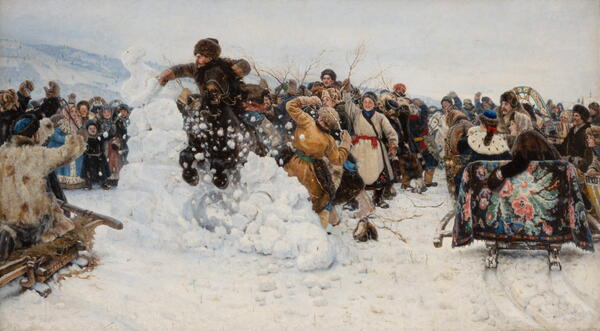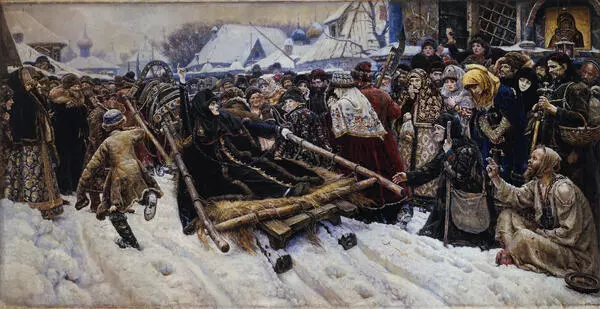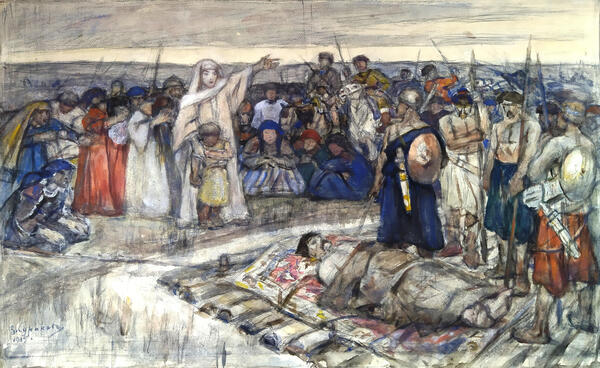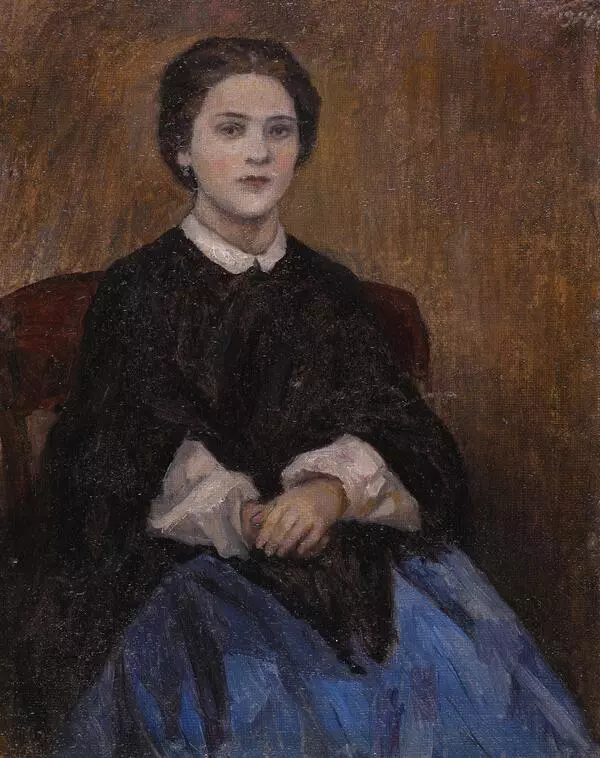Since he had been a child Vasily Surikov dreamt of painting pictures about historical events. After graduating from the Academy of Fine Arts, he completed only one custom-made artwork, and then completely delved into the subject he was most interested in.
Vasily Surikov always admired strong-willed freedom-loving people, bright personalities. So, the personality of Stepan Razin was also interesting for him. Surikov came up with the idea of creating the picture dedicated to the Don Cossack, the leader of Russia’s largest revolt in the pre-Peter era, in 1887, when he finished ‘Boyarynya Morozova’.
At the same time, the artist created the first sketch of the composition. It shows the headman’s boat surrounded by a fleet of Cossack flat-bottomed vessels. In the boat there are Stephan Razin and the princess captured by him.
In 1900, Vasily Surikov returned to this story. He planned to show Razin “thinking deeply” about the people and their destinies. For almost six years, the artist worked on the picture: he was refining the composition, was looking for the appropriate life model for the characters of Razin and his Cossacks. Vasily Surikov traveled to the Volga and Kama rivers to find appropriate models, visited Don and Siberia. At the same time, he collected historical materials and studied folk songs and tales about the “rebellious” ataman. Surikov made a lot of his sketches when travelling to the Volga and the Kama.
However, the artist was not satisfied with the image of Razin he managed to create. He made new version of the picture again and again, even after the picture was presented at the exhibition of the Association of Peredvizhniki Artists in 1906. In 1909, Surikov wrote to art historian Viktor Nikolsky: “I want to make my Razin look more impressive. I went to Siberia, to his homeland and there I found the personification of this image.” The image of a Siberian man looked natural for him to represent the legendary Volga ataman.
There are two drawings that belong to the last period of Surikov’s work on the painting: one is kept in the Krasnoyarsk Art Museum, the second - in the Russian Museum in St. Petersburg. In those drawings Surikov managed to express the image of a rebellious Cossack, a man with a stern and focused face, being in the multitude of his emotions; his watchful stare shows his deep thoughts and inner strength.
There is a photo where Vasily Ivanovich was photographed in the costume of Stepan Razin.
Vasily Surikov always admired strong-willed freedom-loving people, bright personalities. So, the personality of Stepan Razin was also interesting for him. Surikov came up with the idea of creating the picture dedicated to the Don Cossack, the leader of Russia’s largest revolt in the pre-Peter era, in 1887, when he finished ‘Boyarynya Morozova’.
At the same time, the artist created the first sketch of the composition. It shows the headman’s boat surrounded by a fleet of Cossack flat-bottomed vessels. In the boat there are Stephan Razin and the princess captured by him.
In 1900, Vasily Surikov returned to this story. He planned to show Razin “thinking deeply” about the people and their destinies. For almost six years, the artist worked on the picture: he was refining the composition, was looking for the appropriate life model for the characters of Razin and his Cossacks. Vasily Surikov traveled to the Volga and Kama rivers to find appropriate models, visited Don and Siberia. At the same time, he collected historical materials and studied folk songs and tales about the “rebellious” ataman. Surikov made a lot of his sketches when travelling to the Volga and the Kama.
However, the artist was not satisfied with the image of Razin he managed to create. He made new version of the picture again and again, even after the picture was presented at the exhibition of the Association of Peredvizhniki Artists in 1906. In 1909, Surikov wrote to art historian Viktor Nikolsky: “I want to make my Razin look more impressive. I went to Siberia, to his homeland and there I found the personification of this image.” The image of a Siberian man looked natural for him to represent the legendary Volga ataman.
There are two drawings that belong to the last period of Surikov’s work on the painting: one is kept in the Krasnoyarsk Art Museum, the second - in the Russian Museum in St. Petersburg. In those drawings Surikov managed to express the image of a rebellious Cossack, a man with a stern and focused face, being in the multitude of his emotions; his watchful stare shows his deep thoughts and inner strength.
There is a photo where Vasily Ivanovich was photographed in the costume of Stepan Razin.
